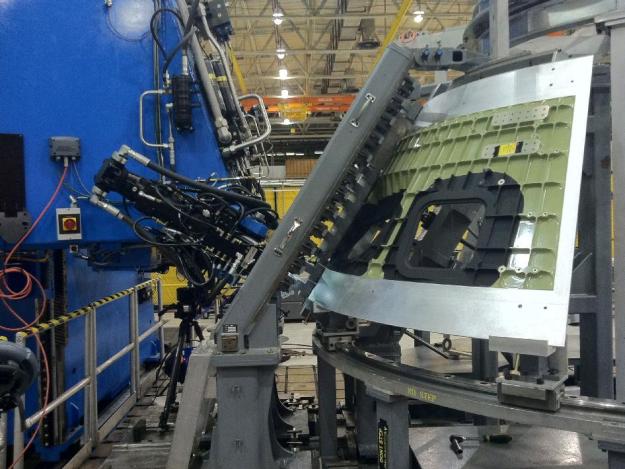 NASA has begun construction on the next manned ship to go into space, beginning with the first weld on the Orion Multi-Purpose Crew Module that will carry astronauts aboard the spacecraft.
NASA has begun construction on the next manned ship to go into space, beginning with the first weld on the Orion Multi-Purpose Crew Module that will carry astronauts aboard the spacecraft.
Work began on the spacecraft in New Orleans on Friday, September 9, and will continue with the addition of heat shields at NASA’s Kennedy Space Center.
The spacecraft is the first manned ship to be constructed since the Space Shuttle Endeavor left the factory in 1991. If all goes as planned, it will also be the first manned spacecraft created by NASA to go into orbit since the Space Shuttle Atlantis, which landed earlier this year and marked the final flight of the Space Shuttle program.
NASA posted the first photos of the Orion under construction this weekend, and had this to say about the project:
Construction on the first space-bound Orion Multi-Purpose Crew Module began with the first weld at the Michoud Assembly Facility on Sept. 9. 2011. This capsule will be used during Orion’s first test flight in space.
After welding is completed at Michoud, the Orion spacecraft orbital test article will be shipped to NASA’s Kennedy Space Center, where the heat shield will be installed. At Kennedy, it will undergo final assembly and checkout operations for eventual flight.
“This marks the beginning of NASA’s next step to send humans far beyond Earth orbit,” said Orion program manager Mark Geyer in an official statement. “The Orion team has maintained a steady focus on progress, and we now are beginning to build hardware for spaceflight. With this milestone, we enter the home stretch toward our first trip to space in this new vehicle.”
Editors' Recommendations
- What comes after Webb? NASA’s next-generation planet-hunting telescope
- The sound of science: Why audio is the next frontier in Mars exploration
- NASA’s OSIRIS-REx spacecraft to perform an asteroid sampling rehearsal
- How NASA’s VIPER rover will tackle the problem of moon dust
- NASA wants your help designing a mini payload for moon exploration




